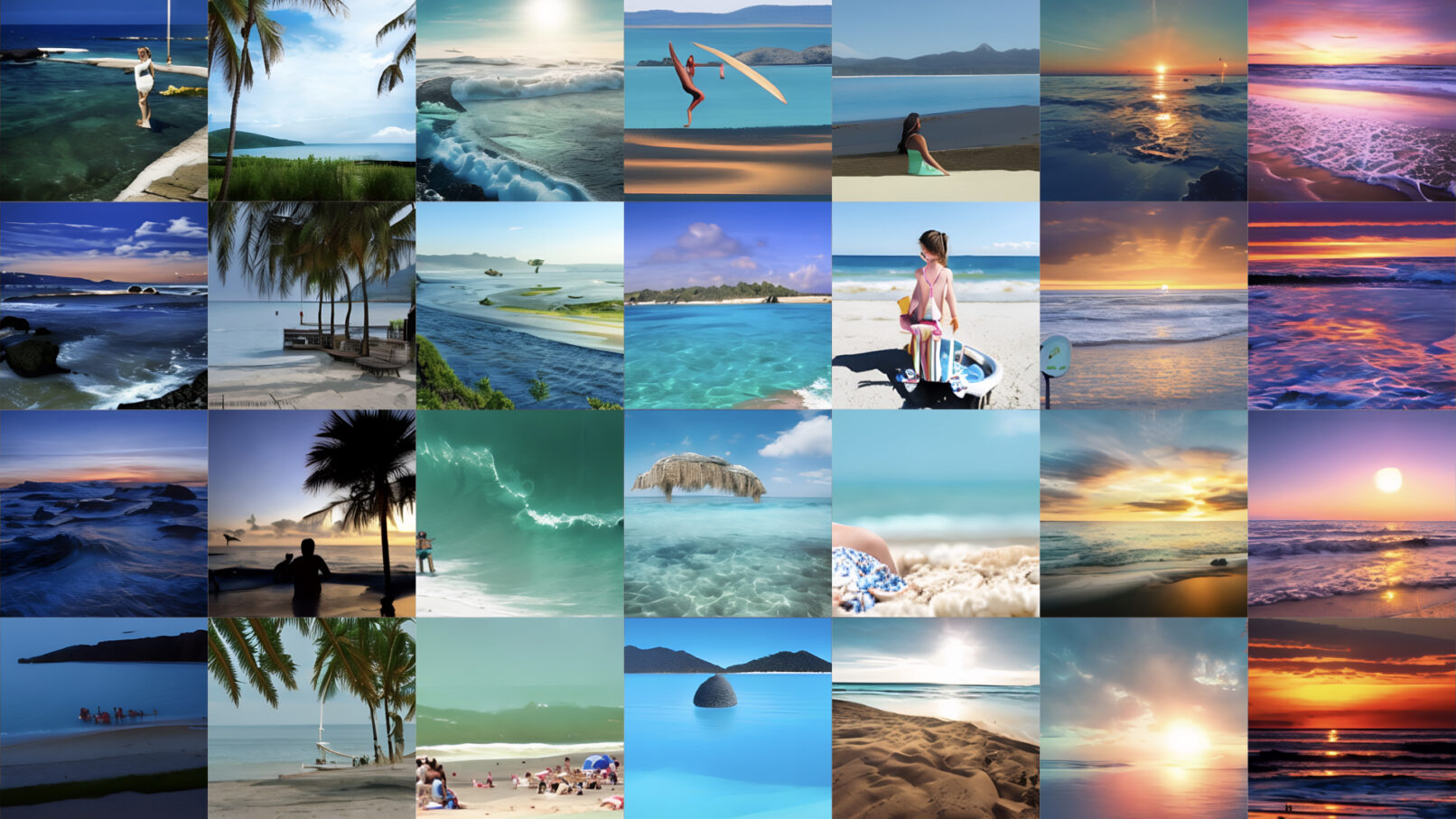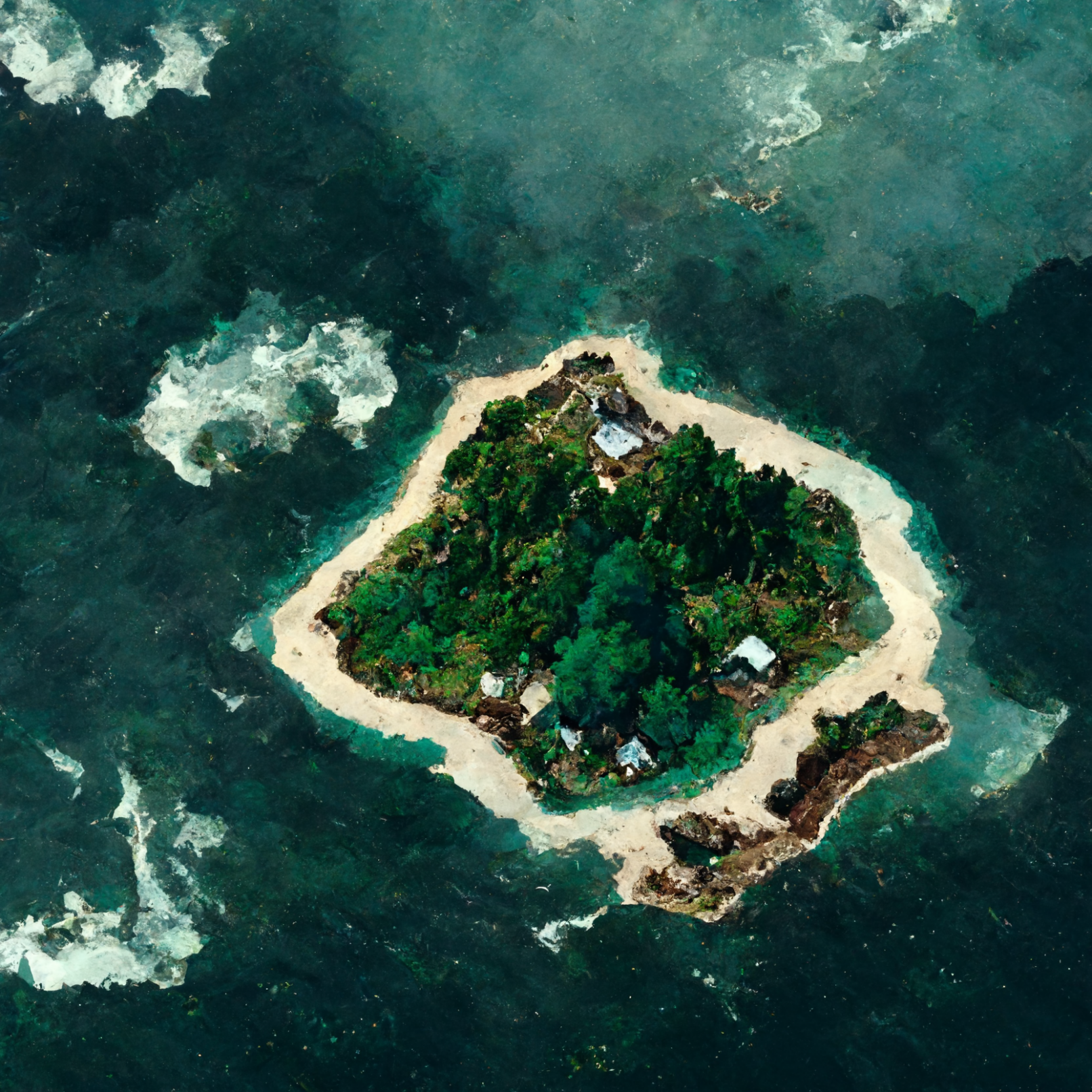Imaginary Landscape
The beach has always been a tourist attraction since the Enlightenment. With the rise of mass tourism and social media, the idealized beach images have become intertwined with reality, resulting in extensive human intervention and terraforming along coastlines worldwide. Drawing on this notion of the beach’s beauty, the project explores the concept of one-sided realities portrayed in travel images on social media. It uncovers cutting-edge image generation models’ technical and aesthetic attributes through AI.
Ting-Chun Liu

# The imaginary landscape which never been reached
This project explores the concept of one-sided realities in travel images shared on social media. It reveals cutting-edge image generation models’ technical and aesthetic aspects through AI and machine learning. By digitally piecing together fantasies and imaginings, the project creates an “ideal other side” that remains unattainable. The resulting model represents a collective unconsciousness formed by AI, and the images it produces are ultimately impossible to achieve, much like the picturesque places portrayed on social media. Through various formats, the project prompts viewers to question the authenticity of these images and the collective consciousness they embody.
#Historical context of beach image as an imaginary landscape
The portrayal of the beach in Western literature has a long history of emphasizing unknown dangers and disasters. Alain Corbin, a French historian, explores the changes in how the Western world perceived the sea in his book “The Lure of the Sea” (1994). Before the Middle Ages, the sea was frequently depicted in connection with the unknown, such as floods, storms, monsters, and various calamities. However, the advancement of science during the Enlightenment gradually dispelled the notion of the unknown by the 17th century. As scientific discoveries began unraveling the sea’s mysteries, the beach took on a new symbolism associated with modernity and tourism. This shift ultimately led to the establishment of bathing beaches by aristocrats and citizens, transforming the beach into a prominent symbol of modern tourism.
#The Bias of Artificial Intelligence Algorithms due to Social Media
The primary audience for human-produced text and images has shifted from humans to machines in modern times. Computers utilize human knowledge systems to generate text and images. However, this learning process is not without its biases. The images used for training data from social media or online libraries often depict pristine, bright, and white beaches. This representation bias leads the computer to perceive beach images as artificial scenery. Moreover, when the machine processes these images, and new images are generated, evaluation bias comes into play in determining whether the generated images align with the concept of a “beach.” These multiple biases contribute to the transformer model often producing mundane beach images.


